The orchid has dried up: why and what to do if the roots have dried up?
Orchid - a darling, past which none of the gardeners can calmly pass. Anyone wants to put it on the windowsill of their home. But few people dare to do this. Some are afraid of responsibility in caring for the plant, once they have ruined, they no longer dare to experiment.
The first problem when caring for a plant is the drying out of either the whole shrub or its rhizomes. You should know why such a process occurs and how to properly care for such a plant.
Content:
- The best varieties of orchids
- Why do plant roots dry?
- What to do if the roots are dry, how to save the plant?
- How to properly care for flowers?
The best varieties of orchids
Orchid represents a delicate creation, of various shapes and incredible shades. It differs not only in external qualities, but also in size:
- The first group is represented by shrubs with flower stalks in a horizontal position. Over time, the sprouts are able to transform into pseudobulbs, which accumulate a significant amount of moisture and useful trace elements.
- Monopodial plants are orchids, with a pronounced main peduncle, on which a large number of inflorescences are located. They gradually open up and completely fill the entire space of the arrow.
Each type of exotic bush is picky about care, growth and cultivation characteristics. The following are the best varieties of orchids that are popular among the population:
- Aganizia is a rare plant, practically not grown indoors. It differs from others in its unusual forms of leaves and peduncles.
- Angrekum Leonis - has a pleasant, not persistent aroma, produces flowers of interesting shape, large size. The inflorescences have pastel colors, up to a matte ivory shade.
- Phalaenopsis - the most common exot in Russia, it lives well in room conditions. With quality care, it grows for 6-7 years. It does not have a specific dormant period; under favorable circumstances, it blooms for 6-9 months.
- Wanda - like Phalaenopsis, is widespread. Its stem can stretch up to 2 meters, and the root system can expand in breadth. It does not have a long flowering - the inflorescences last for 1, -3 months. Flowers, especially at night, give off a pleasant, delicate aroma with a caramel flavor.
- Cattleya - can be both miniature, even dwarf, and huge. It is impossible to buy this type in the store, only in case of a special order. And it's not a fact that an original exotic plant will come, and not a hybrid.
- Dendrobium is a diverse species of shrubs. Has unusual colors and shapes of flowers. Inflorescences reach 5-8 cm in diameter. With quality care, it has the ability to bloom 2 times a year - in the summer months and winter days.
Thus, the orchid has many types. In living nature, there are more than 70 types of its representatives. But not all of them can grow in temperate climates, they do not have the opportunity to grow at home.
Why do plant roots dry?
The most common problem when growing orchids is the frequent drying out of the plant's rhizomes. It should be determined which roots dry - airy, located above the pot with an orchid, or internal, entwining the soil substrate.
Identify the following reasons why the root system of a bush can dry:
- Lack of nutrient moisture - if the bush is kept on a windowsill facing the south side, and watering has not been carried out for a long time, then the rhizomes will begin to dry out first. After the roots have completely given up the moisture they contain, they are completely dry. It is impossible to restore them in case of complete loss, but with careful watering, new rhizomes will quickly grow.
- Significant amount contributed mineral fertilizers, which provoked a burn on the delicate surface of the rhizomes - with uncontrolled exposure to mineral fertilizers, one can observe burnt roots. This is facilitated by the high salt content in this kind of dressing.
Thus, in order not to provoke the reasons for the occurrence of dry roots, it is recommended to know all the rules for growing and caring for specific exotic beauties.
What to do if the roots are dry, how to save the plant?
To prevent such a condition when orchid rhizomes dry out, you need to be guided by the rules:
- Do not water with hard water - this is evidenced by the formation of moist crusts on the surface of the rhizomes, as well as white bloom on the soil substrate contained inside the flowerpot. This is provoked by the high salt content in hard water.
- To prevent this, filtration is used to soften the liquid. For this, special filter cartridges are purchased. When buying, you need to pay attention to the functions and capabilities of the tool.
- The second option to soften the moisture from the tap can be used to dilute wood ash in water in a volume of 3 grams. or fresh peat in the amount of 100g. Any of the components is diluted in 10 liters of water (bucket).
- When using dressings, it is better to underfeed exotic plants with useful additives for good and abundant flowering, than to overdo it and lead the plant to possible death.
In addition, when dry rhizomes are observed, they perform certain actions according to the instructions for the rehabilitation of the bush:
- Remove the bush from the flowerpot.
- Remove the peduncle with sharp scissors and remove any yellow leaves if present.
- Carefully examine the affected root system.
- With the help of palpation, find irretrievably lost roots and healthy areas of rhizomes.
- Cut off with a sharp disinfected tool, sprinkle after the cut wood ash, activated crushed carbon or treated with phytosporin.
- Prepare a warm liquid bath. Place the shrub in heated water for several hours. Carry out this event on a daily basis, directing the impact to the areas where young roots are planned to begin to grow.
- After young roots up to 6 cm in size appear, the shrub is planted in a new soil substrate and a specially disinfected flowerpot.
Thus, you can save the plant from possible death. Better not to experiment with a whimsical beauty. To grow it, you need to know the basic tips and tricks for caring for a multifaceted plant.
How to properly care for flowers?
In most cases, the plant blooms continuously for a long period of time. Therefore, in order to maintain optimal conditions for a chic and abundant flowering and the constant release of new arrows with bright buds, it is recommended to follow simple care rules:
- Required plentiful watering - the best option is watering under direct streams of water, while the temperature of the incoming liquid should not exceed 35 C. The main thing is that after irrigation it is necessary to remove moisture from the growth point. Otherwise, there is a possibility of plant decay.
- Increase the night temperature in the room where the shrub is located by 5 degrees.
- It is forbidden to carry out manipulations with the transplant during active budding - the bush will drop all the buds and the arrow will dry out.
- During the flowering period, it is required to constantly feed - fertilize the plant at least once every 2 weeks. But a greater introduction of nutrients can result in the drying out of the bush.
After all the flowers on the arrow have faded, care should also be taken. A completely dried peduncle is removed with sharp scissors. Top dressing is immediately eliminated. Its introduction is necessary only during preparation for the formation of buds and maintaining bright colors of inflorescences. It is not recommended to apply fertilizers during the rest period.
In winter, watering practically stops, it is eliminated as much as possible, leaving only minor spraying.
So that orchid did not lose her brilliance and beauty, one should know how to take care of her. If you find dry roots, you should look inside the pot, and not guess about the growing rules.
More information can be found in the video:



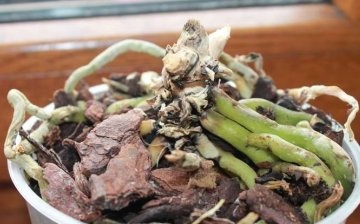
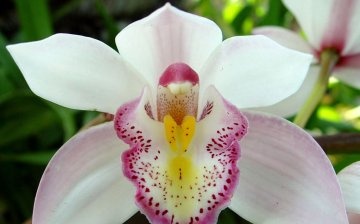
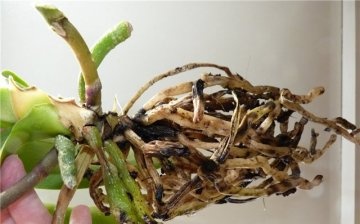
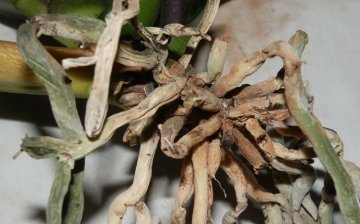






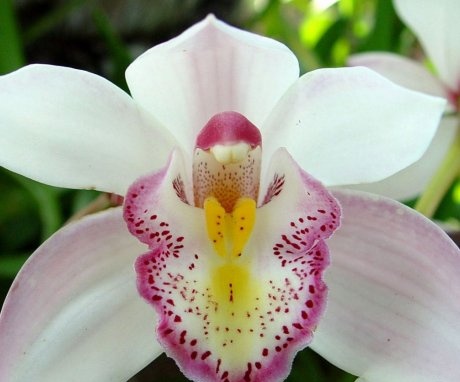
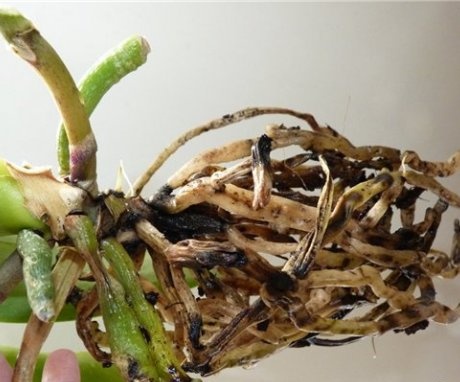
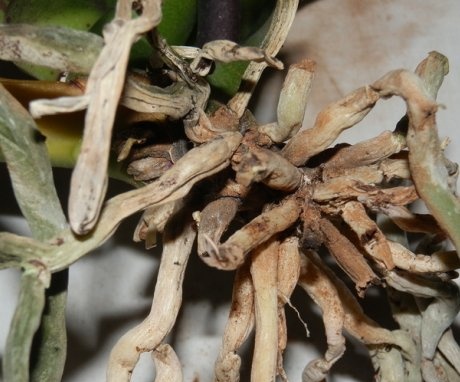
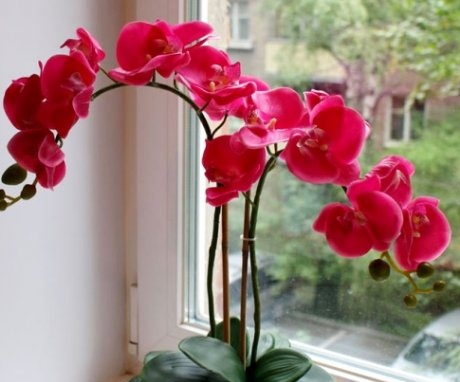
The roots of orchids are strong, tough, but fragile, they are easy to break, trying to give a different direction. Some of the roots dry up and it's not scary. The main thing is to water it on time, it is advisable to leave water in the pan during flowering, and the pot must necessarily transmit light. In my orchids, some roots crawl along the window frame and do not dry out, they have enough air humidity.
In order to determine whether the Phalaenopsis orchid has enough moisture. you need to see how many leaves the flower has below, if there are 4, then this is the norm. If less, then there is not enough moisture. If there are more leaves, then the orchid is watered excessively.
I used to have a lot of orchids before, when I lived in an apartment with windows facing east. Now the windows in the south and the orchids are only half, the most unpretentious. I certainly try my best to support them.